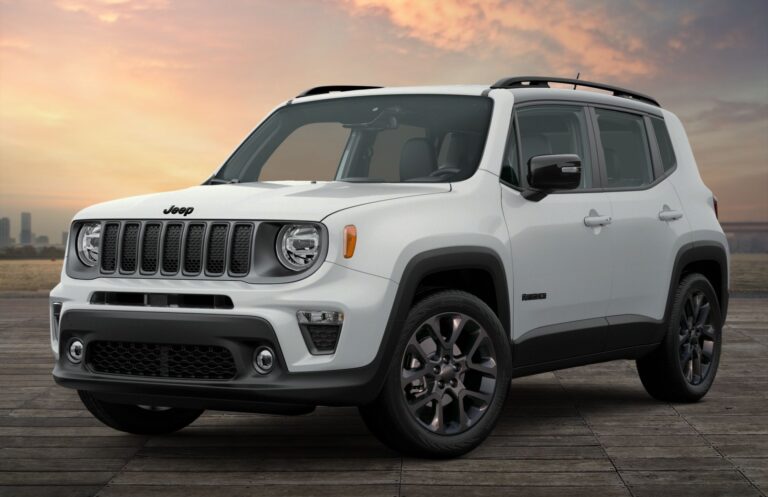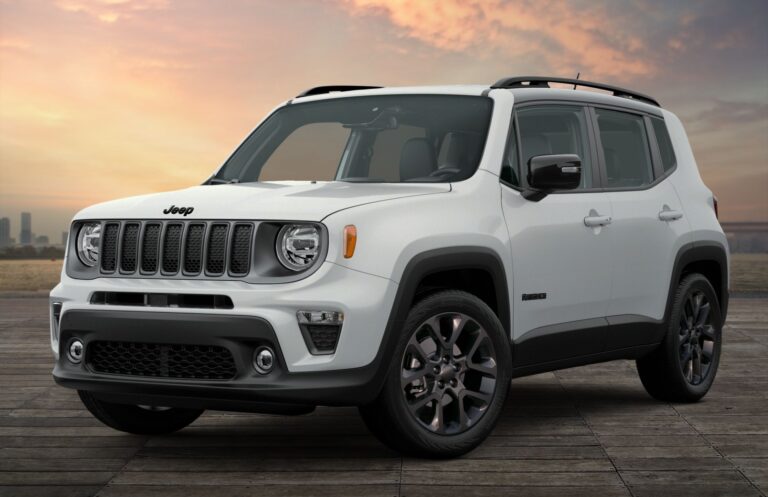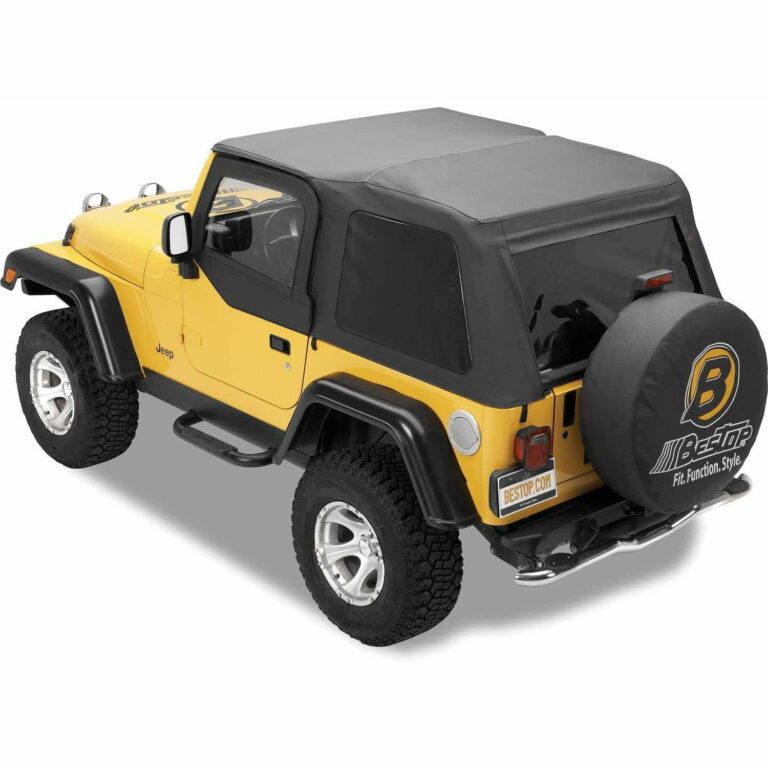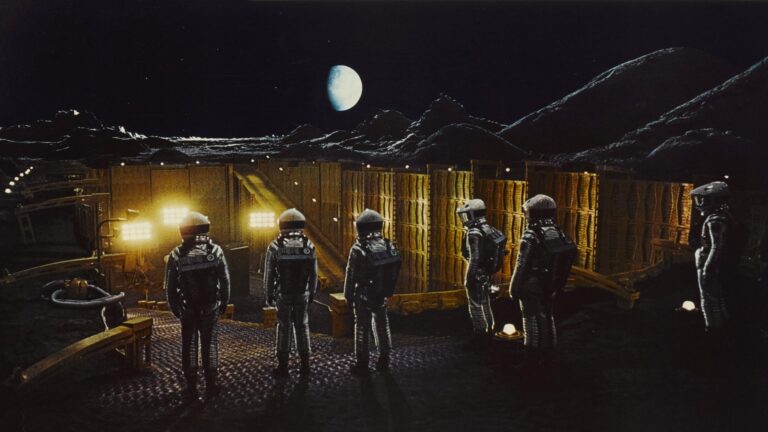1991 Jeep Cherokee For Sale: Unearthing an Enduring American Icon
1991 Jeep Cherokee For Sale: Unearthing an Enduring American Icon /jeeps.truckstrend.com
In the vast landscape of automotive history, few vehicles command the same nostalgic reverence and practical appeal as the Jeep Cherokee XJ. Among its various iterations, the 1991 model year holds a special place, representing a sweet spot in its production run – a mature design with the legendary 4.0L High Output engine, yet still embodying the rugged simplicity that defined its early success. For those seeking a vehicle that blends classic utility with robust capability, a 1991 Jeep Cherokee for sale isn’t just a transaction; it’s an opportunity to own a piece of automotive Americana, a testament to enduring engineering, and a gateway to adventure. This comprehensive guide aims to equip potential buyers with everything they need to know about finding, evaluating, and ultimately acquiring their ideal 1991 Jeep Cherokee.
Why the 1991 Jeep Cherokee Still Commands Attention
1991 Jeep Cherokee For Sale: Unearthing an Enduring American Icon
The Jeep Cherokee XJ (1984-2001) revolutionized the SUV market. It was a pioneering unibody design that offered the off-road prowess of traditional Jeeps with the comfort and driveability of a car. The 1991 model year stands out for several compelling reasons:
- The Legendary 4.0L High Output (HO) Engine: This year marked the widespread adoption of the "High Output" version of the 4.0-liter inline-six engine, producing a robust 190 horsepower and 225 lb-ft of torque. Renowned for its bulletproof reliability, ample low-end torque, and ease of maintenance, this engine is often cited as one of the best ever produced by Chrysler/AMC.
- Rugged Simplicity: Unlike modern SUVs laden with complex electronics, the 1991 Cherokee is refreshingly straightforward. Its mechanical simplicity makes it easier for the average enthusiast to maintain, diagnose issues, and even modify.
- Off-Road Prowess: Even in stock form, the Cherokee XJ is incredibly capable off-road, thanks to its unibody construction, excellent approach/departure angles, and robust drivetrain options. It’s a favorite platform for modification, easily transformed into an extreme trail rig.
- Timeless Design: The boxy, utilitarian aesthetic of the XJ has aged remarkably well. It’s instantly recognizable and projects an image of no-nonsense capability that resonates with enthusiasts and casual observers alike.
- Strong Community Support: A vast and passionate community surrounds the XJ, offering a wealth of knowledge, shared experiences, and readily available aftermarket parts. This makes ownership significantly more enjoyable and manageable.

For many, a 1991 Jeep Cherokee for sale represents not just transportation, but a project, a hobby, and a connection to a simpler, more mechanically focused era of motoring.
Key Specifications and Features of the 1991 Model
Understanding the core components of the 1991 Cherokee is crucial for any potential buyer.
- Engine Options:

- 4.0L High Output (HO) Inline-Six: The star of the show. This 242 cubic-inch engine is the primary reason most buyers seek a 1991 model. It offers excellent durability and power for its size.
- 2.5L Inline-Four: Less common and significantly less powerful (125 hp). While more fuel-efficient, it struggles with the Cherokee’s weight and is generally less desirable for enthusiasts.
- Transmission Options:

- Aisin-Warner AW4 Automatic: An incredibly robust and reliable 4-speed automatic transmission. Known for its smooth shifts and longevity when properly maintained.
- Aisin AX-15 Manual: A 5-speed manual transmission, also highly regarded for its durability. Manual XJs are less common but sought after by those who prefer more direct control.
- Transfer Cases (4WD Models):
- NP231 Command-Trac: A part-time 4WD system, meaning it should only be used in 4WD on loose surfaces (dirt, snow, sand) to prevent driveline bind. It offers 2WD High, 4WD High, and 4WD Low.
- NP242 Selec-Trac: A full-time 4WD system, which can be used on any surface, including dry pavement. It offers 2WD High, 4WD Part-Time High, 4WD Full-Time High, and 4WD Low. The Selec-Trac is often preferred for its versatility.
- Axles:
- Front: Dana 30 (reverse cut).
- Rear: Most came with the Dana 35. Some rare models, particularly those with the optional tow package, might have the stronger Chrysler 8.25. The 8.25 is generally preferred for its strength.
- Trim Levels: Common trims for 1991 included Base (often called "Sport" in later years), Pioneer, Laredo, and Limited. Laredo and Limited models typically offered more creature comforts like power windows, air conditioning, and upgraded interiors.
What to Look For When Buying a 1991 Jeep Cherokee (Buyer’s Guide)
Purchasing a vehicle that’s over three decades old requires a meticulous inspection. Patience and a critical eye are paramount.
- Rust: This is the biggest enemy of the unibody Cherokee. Inspect thoroughly:
- Rocker Panels: Often the first to go, especially behind the front wheels.
- Floorboards: Check under the carpet for holes, particularly around the footwells.
- Rear Quarter Panels: Look around the wheel wells and lower sections.
- Frame Rails: Though unibody, there are "frame rails" that run the length of the vehicle. Inspect these, especially where suspension components attach.
- Tailgate: Prone to rust around the window and lower edges.
- Subframe/Mounting Points: Critically examine areas where suspension and steering components attach to the body.
- Engine (4.0L HO):
- Oil Leaks: Common areas include the rear main seal, valve cover, and oil filter adapter. Minor leaks are common, but significant ones indicate neglect.
- Cooling System: Check the radiator (look for leaks or clogging), water pump (leaks from weep hole), thermostat housing, and fan clutch. Overheating is a common XJ issue.
- Listen for Noises: Ticking (common from valve lifters, often benign if not loud), knocking (serious bearing issue), or rough idle (can be simple like an IAC sensor or more complex).
- Transmission:
- AW4 Automatic: Shifts should be smooth and predictable. Check fluid color (should be red, not brown or black) and smell (not burnt).
- AX-15 Manual: Clutch should engage smoothly without slipping. Shifting should not be excessively notchy.
- Transfer Case:
- Leaks: Check for fluid leaks from seals.
- Engagement: Test all 4WD modes (2H, 4H, 4L, and 4FT if NP242) to ensure they engage smoothly without grinding.
- Axles:
- Leaks: Check differential covers and pinion seals.
- U-Joints: Inspect drive shaft and axle shaft U-joints for play or rust.
- Noise: Listen for humming or whining from the differentials during the test drive.
- Suspension and Steering:
- Sag: Rear leaf springs are notorious for sagging.
- Bushings: Inspect all control arm, sway bar, and leaf spring bushings for cracking or deterioration.
- Steering Play: Excessive play in the steering wheel indicates worn tie rods, ball joints, or a tired steering box.
- Shocks: Look for leaks.
- Electrical: Test all power windows, locks, gauges, HVAC fan, and exterior lights. Common issues include power window regulators and gauge cluster eccentricities.
- Interior: Check the condition of seats (rips, tears), headliner (sagging), and dashboard (cracks are common).
- Documentation: Ask for service records. A well-documented history is a strong indicator of a cared-for vehicle.
- Pre-Purchase Inspection (PPI): If you’re serious, invest in a professional inspection by a mechanic familiar with older Jeeps. It’s money well spent.
Common Modifications and Enhancements
The 1991 Cherokee’s robust platform makes it incredibly popular for modifications, from mild to wild.
- Lift Kits: Ranging from 2-inch budget boosts to 6-inch long-arm systems, lifts are common for increased ground clearance and larger tires.
- Tires: Larger, more aggressive tires significantly enhance off-road performance.
- Bumpers and Armor: Aftermarket steel bumpers, rock sliders, and skid plates protect the vehicle and improve recovery options.
- Gearing: Changing differential gears is often necessary after installing larger tires to restore power and optimize performance.
- Maintenance Upgrades: Upgraded cooling systems, steering components, and braided brake lines are common "reliability mods" that improve the XJ’s longevity and performance.
Owning a 1991 Jeep Cherokee: Benefits and Challenges
Benefits:
- Unmatched Durability: The 4.0L engine and AW4 transmission are incredibly robust.
- Exceptional Off-Road Capability: A stock XJ can surprise many newer SUVs on the trail.
- Ease of Maintenance: Simple mechanicals mean many repairs can be done by a DIY enthusiast.
- Affordable Parts: New and used parts are plentiful and generally inexpensive.
- Strong Resale Value: Well-maintained XJs hold their value remarkably well.
- Iconic Status: It’s a head-turner and conversation starter.
Challenges:
- Age-Related Issues: Expect to deal with dried-out seals, worn bushings, and potential electrical gremlins typical of a 30+ year old vehicle.
- Rust: As mentioned, rust can be a terminal issue if severe.
- Fuel Economy: Don’t expect hybrid-like MPG. The 4.0L is thirsty, especially with larger tires and a lift.
- Ride Comfort: While better than older Jeeps, the ride can be stiff and truck-like compared to modern crossovers.
- Safety Features: Minimal by modern standards (no airbags, ABS often optional/primitive).
- Finding a Good One: The best examples are becoming rarer and command premium prices.
Tips for a Successful Purchase
- Set a Realistic Budget: Don’t just budget for the purchase price. Factor in immediate maintenance (fluids, spark plugs, filters), potential repairs, and any desired modifications.
- Patience is Key: Don’t buy the first one you see. Wait for a well-maintained example that fits your needs and budget.
- Bring a Friend (or Mechanic): A second set of eyes, especially from someone knowledgeable about XJs, is invaluable.
- Thorough Test Drive: Drive it at various speeds, on different surfaces if possible, and engage all 4WD modes. Listen for unusual noises, feel for vibrations, and note how it shifts and steers.
- Verify VIN: Ensure the VIN on the title matches the vehicle’s VIN plates.
- Negotiate: Based on your inspection findings and market value, don’t be afraid to negotiate the price.
Price Guide: 1991 Jeep Cherokee For Sale
The price of a 1991 Jeep Cherokee can vary wildly based on its condition, mileage, trim level, drivetrain, and location. This table provides a general guideline:
| Condition Category | Description | Estimated Price Range (USD) | Key Considerations |
|---|---|---|---|
| Project/Parts Car | Significant rust, major mechanical issues (non-running, bad engine/trans), severe cosmetic damage. Requires extensive restoration or is suitable only for parts. | $500 – $2,000 | For experienced mechanics or those needing specific components. Expect to invest significant time and money. Often titled as "salvage" or "parts only." |
| Fair Condition | Running and driving but needs considerable mechanical and/or cosmetic work. Moderate rust, high mileage (200k+), deferred maintenance. | $2,000 – $4,500 | Potential daily driver with immediate investment. Expect to replace wear items (suspension, brakes), address fluid leaks, and potentially some electrical issues. Good candidate for a budget build or first-time enthusiast project. |
| Good Condition | Solid runner with minor issues. Minimal rust, reasonable mileage (120k-180k), well-maintained but showing age. Clean interior with minor wear. | $4,500 – $8,000 | Reliable daily driver or excellent foundation for tasteful modifications. May need minor cosmetic touch-ups or routine maintenance items. Look for good service records. Represents the sweet spot for many buyers. |
| Excellent/Collector | Very clean, minimal to no rust, low mileage (under 100k-120k), meticulously maintained. Original or tastefully modified. Showroom quality or near-perfect. | $8,000 – $15,000+ | Rare finds that command a premium. Often owned by enthusiasts who have invested heavily in its upkeep. Ideal for collectors or those who want a turn-key classic. Values can exceed this range for exceptionally pristine or unique examples. |
Important Notes:
- Location: Prices can vary regionally. Areas with less salt use (e.g., Southwest US) often have rust-free examples that fetch higher prices.
- Drivetrain: 4WD models are almost always more valuable than 2WD. Manual transmissions can also add a slight premium for some buyers.
- Trim Level: Laredo and Limited trims, with their added features, typically command more than base models in similar condition.
- Modifications: Quality, well-done modifications (e.g., professional lift, re-geared axles) can increase value for the right buyer. Poorly executed or extreme modifications can actually decrease value.
- Documentation: A complete service history and clear title add significant value and peace of mind.
Frequently Asked Questions (FAQ)
Q1: Is the 4.0L engine truly reliable?
A1: Yes, the 4.0L High Output inline-six is legendary for its reliability and longevity. With proper maintenance (regular oil changes, cooling system care), it can easily last well over 250,000 miles, with many reaching 300,000+ miles.
Q2: What kind of fuel economy can I expect?
A2: Don’t buy a 1991 Cherokee for fuel economy. Stock, you can expect around 15-18 MPG combined, dropping significantly (12-15 MPG or less) with larger tires, lift kits, and heavy off-road modifications.
Q3: Are parts readily available for a 1991 model?
A3: Absolutely. Due to the XJ’s long production run and popularity, both OEM and aftermarket parts are widely available and generally affordable. There’s a massive support network.
Q4: Is it good for off-roading right out of the box?
A4: Yes, even a stock 1991 Cherokee is surprisingly capable off-road, especially with a 4.0L engine and 4WD. Its compact size, short wheelbase, and solid axles make it nimble on trails.
Q5: What’s the difference between NP231 Command-Trac and NP242 Selec-Trac transfer cases?
A5: The NP231 is a part-time 4WD system, meaning you should only use 4WD on loose surfaces. The NP242 is a full-time system that includes a "4WD Full-Time" mode, which can be used on any surface, including dry pavement, making it more versatile for varied conditions.
Q6: What are the most common rust spots I should check?
A6: The most critical areas are the rocker panels, floorboards, rear quarter panels around the wheel wells, and the "frame rails" where suspension components attach. Also check the tailgate and around the windshield.
Q7: Is a 1991 Jeep Cherokee safe by modern standards?
A7: No. The 1991 Cherokee was designed to 1990s safety standards. It lacks modern airbags (driver’s side airbag became standard later in the XJ run, not typically on ’91), advanced crumple zones, traction control, stability control, and ABS was often optional and not as effective as modern systems. Drive accordingly.
Q8: How much should I budget for maintenance after buying a used one?
A8: This depends heavily on the condition you buy it in. For a "Fair" condition vehicle, budget $1,000-$3,000+ in the first year for catch-up maintenance and common repairs. For a "Good" condition vehicle, $500-$1,500 might cover routine items and minor fixes. Always set aside an emergency fund.
Conclusion
The 1991 Jeep Cherokee for sale is more than just a used car; it’s an opportunity to acquire a robust, versatile, and iconic piece of American automotive history. With its legendary 4.0L High Output engine, straightforward mechanics, and timeless design, it continues to capture the hearts of enthusiasts worldwide. While purchasing an older vehicle comes with its challenges, a thorough inspection, realistic expectations, and a passion for the XJ platform will lead you to a rewarding ownership experience. Whether you’re seeking a capable daily driver, a weekend trail warrior, or a project vehicle to hone your mechanical skills, the 1991 Jeep Cherokee stands ready to deliver adventure and a connection to an enduring legacy. Happy hunting!





